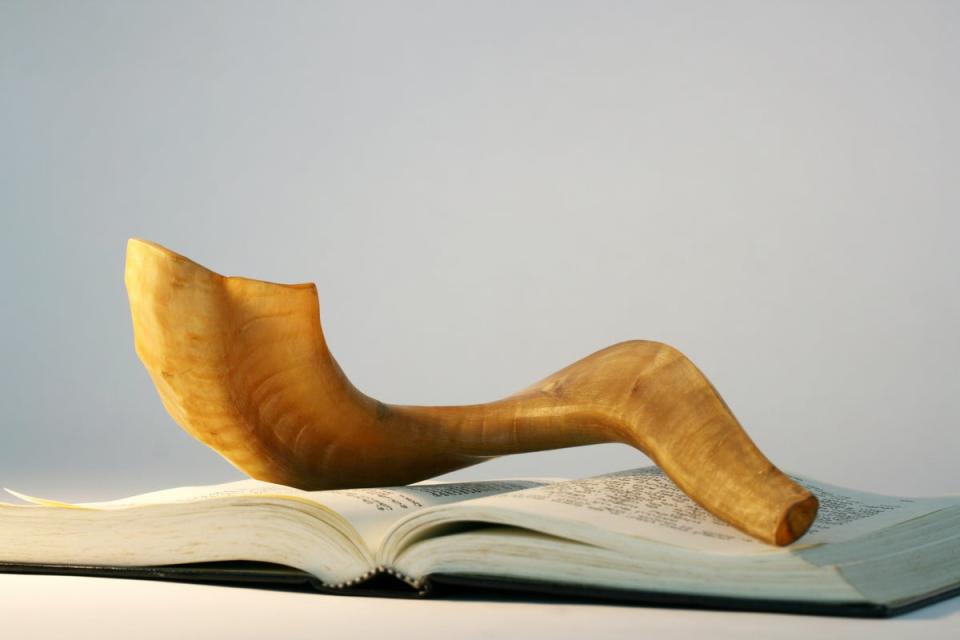Rosh Hashanah: When is the Jewish New Year and how is it celebrated?
Rosh Hashanah, the Jewish New Year, is an annual observance celebrated by Jewish people across the world.
Translated from Hebrew to mean “head of the year”, it is observed by attending prayer services in synagogue, listening to the blowing of an ancient musical horn and eating a variety of symbolic – and delicious – foods.
Here is everything you need to know about the two-day celebration.
When is it?
This year, Rosh Hashanah began on the evening of Sunday 25 September and ends on the evening of Tuesday 27 September.
The date of the festival on the Gregorian calendar varies on an annual basis, as the Jewish calendar is lunisolar - meaning that it is based on lunar and solar cycles.
Every year, Rosh Hashanah takes place on the first day of the month of Tishrei.
Tishrei is the first month of the civil year and the seventh month of the ecclesiastical year, according to the Jewish calendar.
It always falls at some point in September or October on the Gregorian calendar.
Rosh Hashanah marks the beginning of 10 days of repentance in Judaism.
This period culminates with Yom Kippur, a holy day which sees Jewish people fast and pray to atone for their sins.
To wish someone of the Jewish faith a happy new year, you can say “Shana Tova“, meaning “good year”, or “Shana Tova Umetukah“, meaning “good and sweet year”.
What does it commemorate?
While Rosh Hashanah celebrates the Jewish New Year, it also signifies the creation of the universe.
In Judaism, it is taught that Hashem (God) created the universe in six days.
This six-day period – which included the creation of Adam and Eve on the sixth day – ended with a seventh day of rest, something that is commemorated every week by Jewish people on Shabbat.
“It is the birthday of the universe, the day God created Adam and Eve and it’s celebrated as the head of the Jewish year,” explains Chabad, an Orthodox Jewish Hasidic organisation.
How is it celebrated?
During Rosh Hashanah, as with Shabbat, Jewish people who are devout refrain from partaking in certain activities such as using electric devices, driving or writing.
Throughout the festival, it is tradition to attend prayer services at synagogue, although this year fewer people are likely will be in attendance due to the coronavirus pandemic.
On both mornings of the religious festival, a shofar, an ancient musical instrument usually made from a ram’s horn, is blown during the prayer service.
When a person blows a shofar on Rosh Hashanah, they are instructed to make sounds of varying lengths.

The Teki’ah is when one long sound, Shevarim are three short blasts, and Teruah is made up of nine short, staccato blasts.
It is customary to hear the blowing of the shofar 100 times over the course of Rosh Hashanah.
Another tradition that is followed during the religious festival is Tashlich, which comes from the Hebrew word “to cast”.
In an act that represents the casting off of sins, those who take part in the ritual visit a body of water on the first day of Rosh Hashanah (typically a river or a stream), where they recite special prayers.
While some Jewish people throw bread in the water as part of the tradition, according to Chabad, this act was condemned by rabbis in the 14th century.
What food is eaten during Rosh Hashanah?
During Rosh Hashanah, festive meals are shared between family and close friends.
These feature a variety of sweet foods, symbolising a sweet new year ahead.
Foods one can expect to see on the table during the Jewish New Year include apple and honey, pomegranate, round raisin challah and honey cake.
Candles are also traditionally lit in the home to welcome the festival.
To read more about the symbolic foods that are eaten during Rosh Hashanah, click here.

